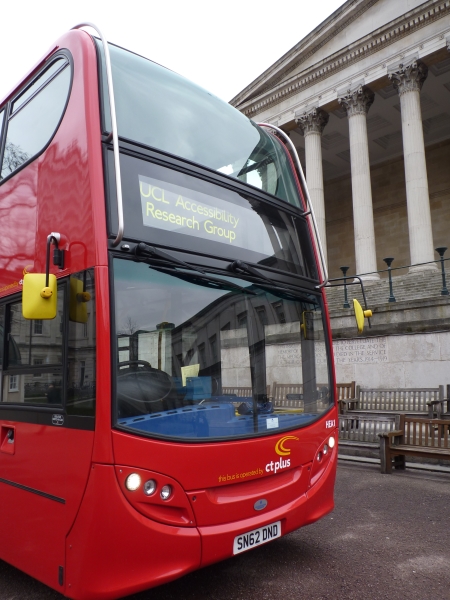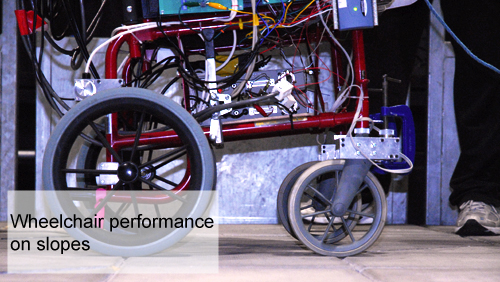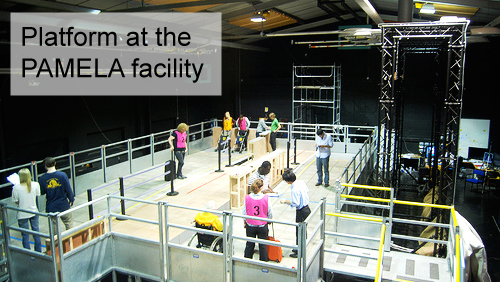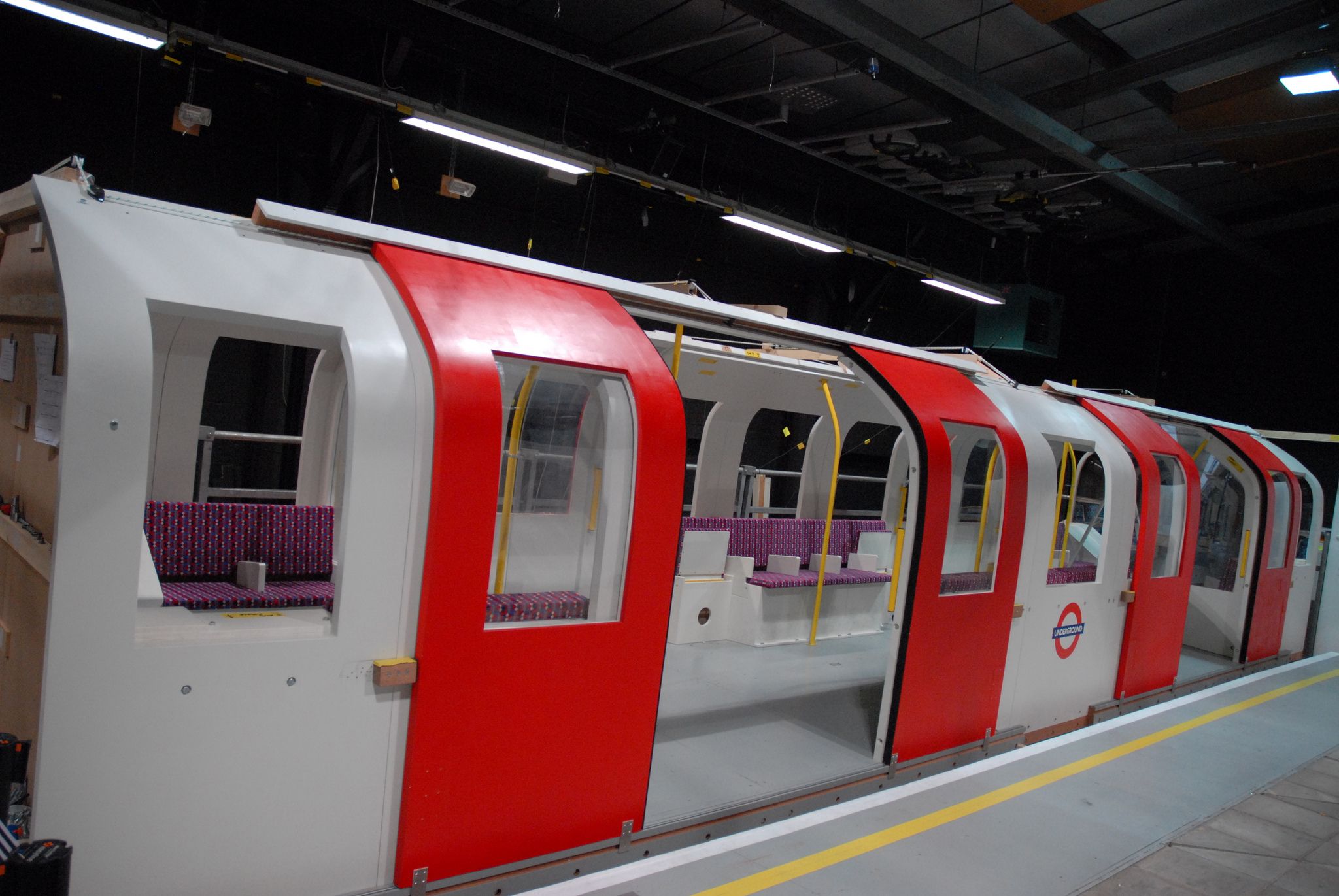You are currently viewing only those items made visible to the public. Sign in here with your UCL username and password to view the full catalogue.
Department of Civil, Environmental and Geomatic Engineering
| CONTACT 1 | Derrick Boampong |
|---|---|
| Enquire about this item |
Description
The concept of the PAMELA, conceived by Nick Tyler, is to have a pedestrian space which is fully configurable so that real-world conditions can be replicated in controlled settings.
PAMELA is a laboratory for the assessment of pedestrian movement : how people react in pedestrian environments; under well controlled laboratory conditions. PAMELA is a modular platform that can be adjusted to simulate different surface profiles and types. It consists of 36 modules (1.2m x 1.2m); with interchangeable surfaces. Each module can slope in any direction, up to a maximum of 20%. Street furniture (obstacles and amenities) can be arranged on the platform with carefully designed lighting to simulate conditions from daylight to darkness. Surround sound will also allow noises to be included - e.g. trains passing through stations, announcements etc. This will enable us to test combinations of defined street environments and the range of capabilities of pedestrians, and users of wheelchairs and scooters. From these data we will verify and extend an existing pedestrian microscopic simulation model and offer a facility for checking existing and proposed street layouts. Using PAMELA we will be able to develop a definitive database on capabilities - singly and in combination - based on empirical evidence. We aim to provide a better understanding of how design details affect people's ability to move around the static environment.
Associated Items
-

-

Accessibility Research Bus
We have two lines of research that make use of the hybrid double deck bus. Its full set of real-time data recording systems enable us to study the environmental performance of the vehicle, comparing its energy use and operation with the actions taken
more details » -

-

-

-

-

-

-

-

-

Item ID #.
Last Updated: 29th October, 2015
There are no publically available categories listed at present. You may have to sign in to browse this catalogue.





